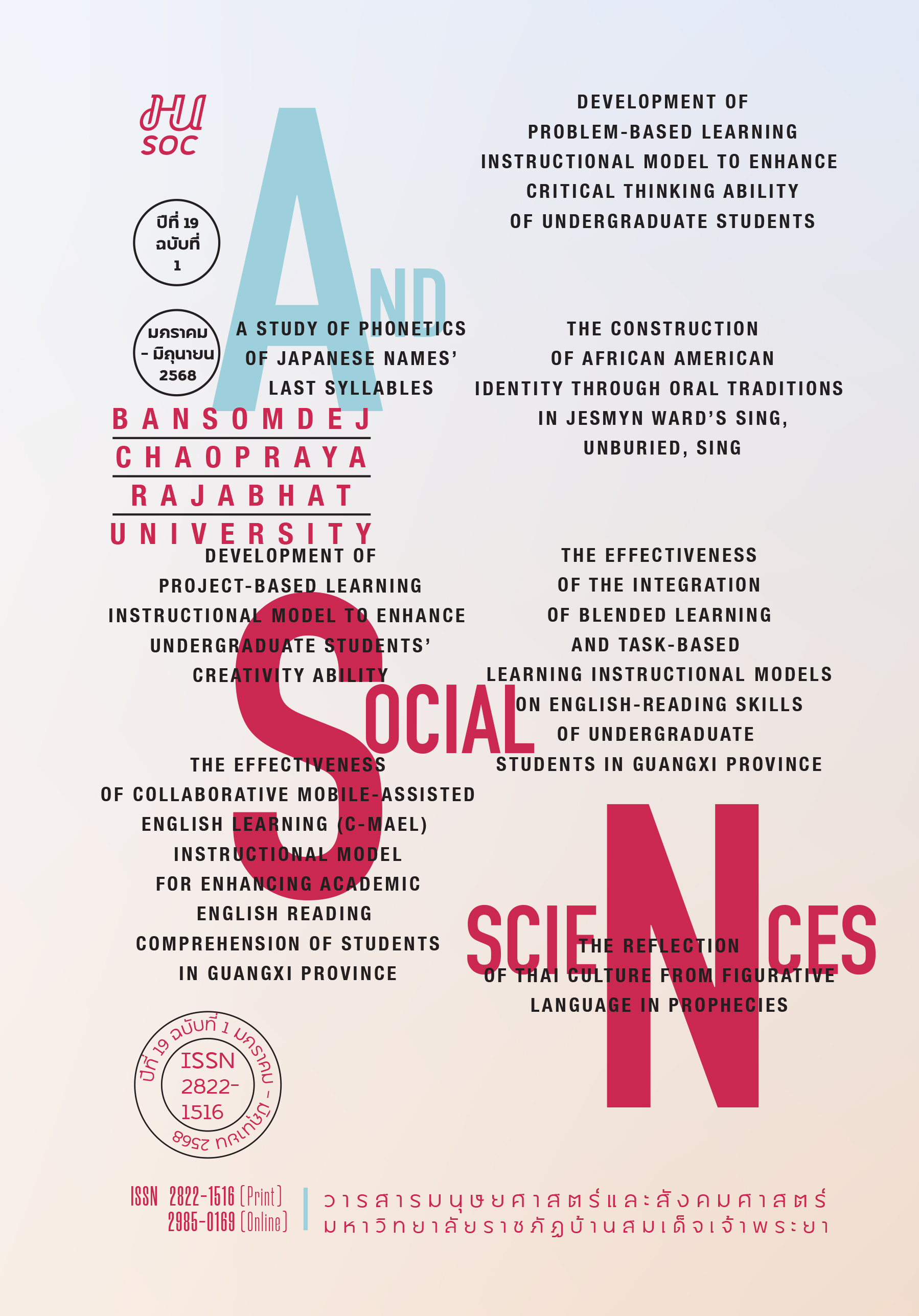A Phonetic Analysis of Japanese Names
คำสำคัญ:
Japanese Names, Mora, Final Syllable, Male and Female Names, Phoneticsบทคัดย่อ
This article has two main aims as follows: 1) to investigate the number of syllables or mora of Japanese male and female names and 2) to examine the relationship between genders and the sounds of the last syllables of Japanese names. This study used the data of the 100 most popular Japanese names given to males and females from the search results of a Japanese name ranking website in 2021. Then the data was phonetically analyzed to understand how the number of syllables or mora and phonetic characteristics of Japanese names’ last syllables were related to genders of the owners of the names. The study found a tendency that Japanese names given to males have more syllables or mora than the names given to females. Japanese names given to males with 3 syllables or mora accounted for 70%; while those with 2 syllables or mora made up only 27%. In contrast, Japanese names given to females with 3 syllables or mora accounted for 51%; while those given to females with 2 syllables or mora made up 49%. It was also found that Japanese names with 4 syllables or mora were given exclusively to males. Japanese male names ending with the consonant と[to] were the most prevalent, followed by those ending with the consonant た [tɑ]. For Japanese female names, the names ending with the consonants な [na] และり [ɾʲi] were most common, followed by those ending with consonants い[i] และ き [kʲi]. This study shows that last syllables of Japanese names have a correlation with genders. Therefore, it is argued that the genders of the owners of the names can be guessed from the last syllabic pronunciation of the names. This is in line with the hypothesis that the last syllables of Japanese names have a relation with genders.
เอกสารอ้างอิง
Akamatsu, T. (1997). Japanese Phonetics: Theory and Practice. LINCOM EUROPA.
Blum, D. S. (1997). Naming practices and the power of words in China. Language in Society, 26, 357-379.
Komori, Y. (2002). Trends in Japanese First Names in the Twentieth Century: A Comparative Study International Christian University Publications 3-A. Asian Cultural Studies, 28, 67-82. Doi: 10.34577/00001623.
Mori-Kolbe, N. (2020). “Child Naming Practice and Changing Trends in Modern Japan”. The Coastal Review: An Online Peer- Reviewed Journal, 11(1), 1-21. Doi:10.20429/cr.2020.110102
Watanabe, N. (2005) “Poetics of Japanese Naming Practice.” Names, 53(1-2), 21-48. Doi:10.1179/nam.2005.53.1-2.21.
Willson, S. (1998). The Means of Naming: A Social and Cultural History of Personal naming in Western Europe. UCL Press Limited.
今田慈子. (1993).『発音』. 凡人社.
朱穎 .(2014). キラキラネームから見た日本人の 命名文化の変化.金沢大学人間社会学域経済学 類社会言語学演習. 9, 41-68. http://hdl.handle.net/2297/37415
勝美川岸. (2013). 人名における漢字使用の変化とその誘因. 安田女子大学紀要. 41, 1-14. http://id.nii.ac.jp/1226/00000089/
藩 蕾. (2008). 古代日本人の名前の研究. 博士論文(学術). 桜美林大学.
ดาวน์โหลด
เผยแพร่แล้ว
รูปแบบการอ้างอิง
ฉบับ
ประเภทบทความ
สัญญาอนุญาต
ลิขสิทธิ์ (c) 2024 คณะมนุษยศาสตร์และสังคมศาสตร์ มหาวิทยาลัยราชภัฏบ้านสมเด็จเจ้าพระยา

อนุญาตภายใต้เงื่อนไข Creative Commons Attribution-NonCommercial-NoDerivatives 4.0 International License.




